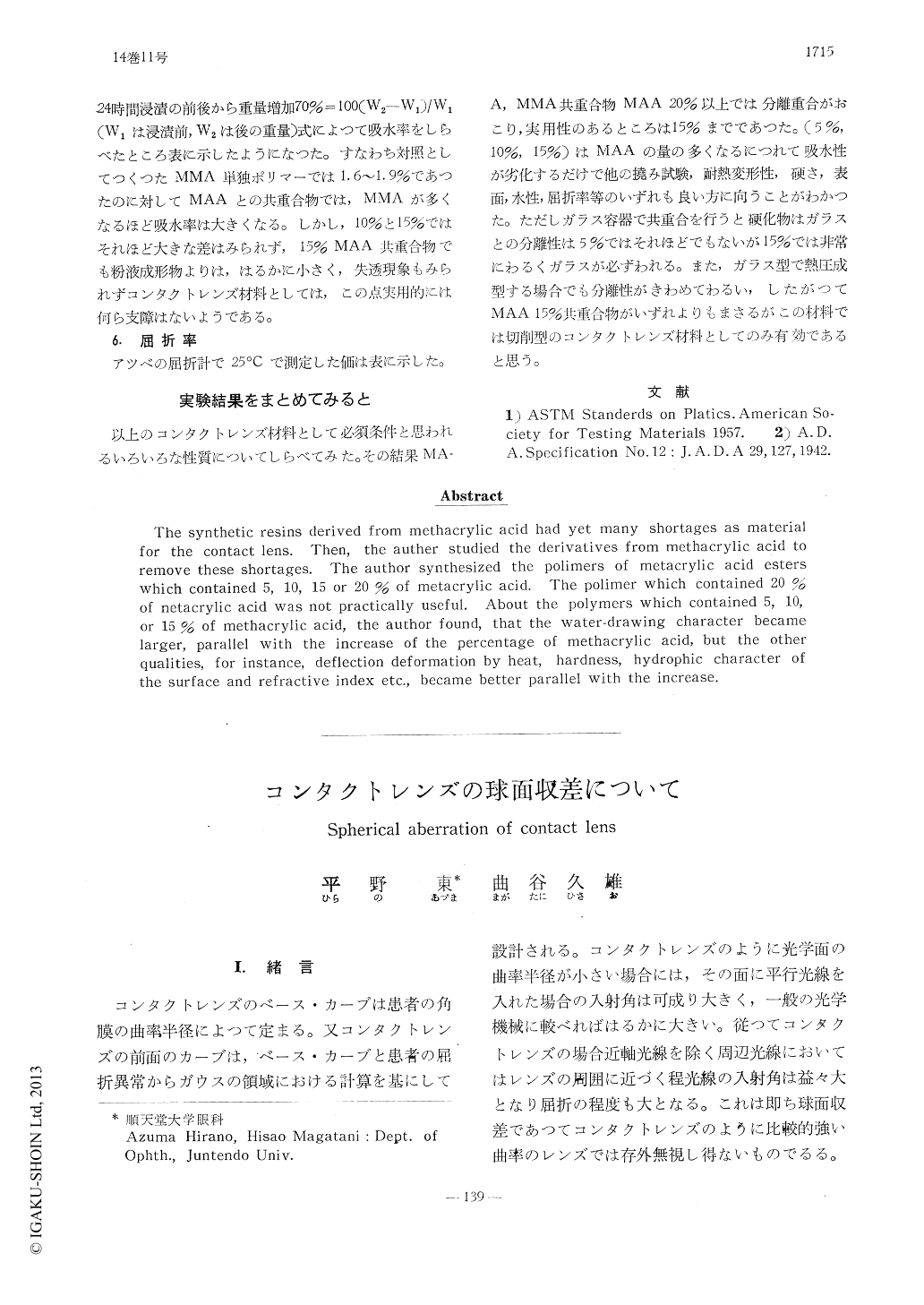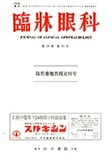Japanese
English
- 有料閲覧
- Abstract 文献概要
- 1ページ目 Look Inside
I.緒言
コンタクトレンズのベース・カーブは患者の角膜の曲率半径によつて定まる。又コンタクトレンズの前面のカーブは,ベース・カーブと患者の屈折異常からガウスの領域における計算を基にして設計される。コンタクトレンズのように光学面の曲率半径が小さい場合には,その面に平行光線を入れた場合の入射角は可成り大きく,一般の光学機械に較べればはるかに大きい。従つてコンタクトレンズの場合近軸光線を除く周辺光線においてはレンズの周囲に近づく程光線の入射角は益々大となり屈折の程度も大となる。これは即ち球面収差であつてコンタクトレンズのように比較的強い曲率のレンズでは存外無視し得ないものでるる。そこで実際に入射角を基に各種のコンタクトレンズにつき収差を計算してみることにした。又角膜コンタクトレンズではレンズは眼の光軸と一致して装着されるべきものであるので,その光軸上の分解能が非常に重要である。一方レンズの検定の際の誤差を除去する目的でコンタクトレンズの球面収差を検討する事にした。この結果は著者等が臨床上遭遇する2,3の事実の解明の基となつた。そこでその収差の計算内容を記述すると共に球面収差を補正したコンタクトレンズというものを検討してみた。
It is expected that the aberration is high in a contact lens which has a short radius of curvature and then a large incident angle. First, the author calculated the spherical aberration of the contact lens and charted its value. Then, the author measured the sphe-rical aberration of a contact lens practicing his original method. The results of this measurement showed, that the value of the refractive power measured by the apex-refrac-tometer had a considerable error. By the fact above stated, the blurred vision which was caused by a divergence of the contact lens and was an unsolved question in clinical prac-tice, was explained.

Copyright © 1960, Igaku-Shoin Ltd. All rights reserved.


